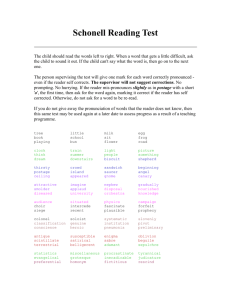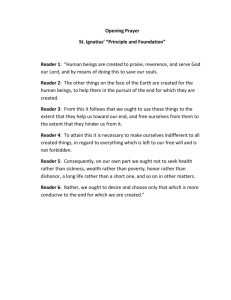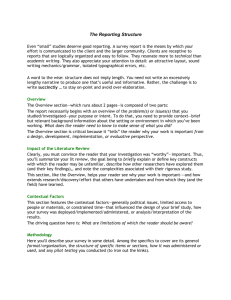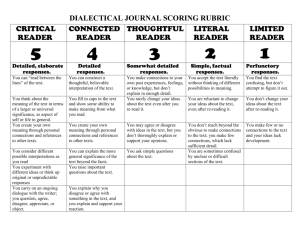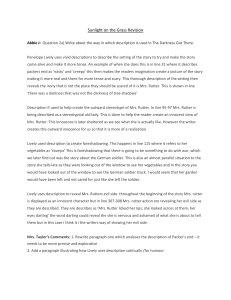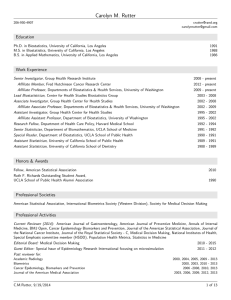Review: Critical Thinking for Social Work
advertisement
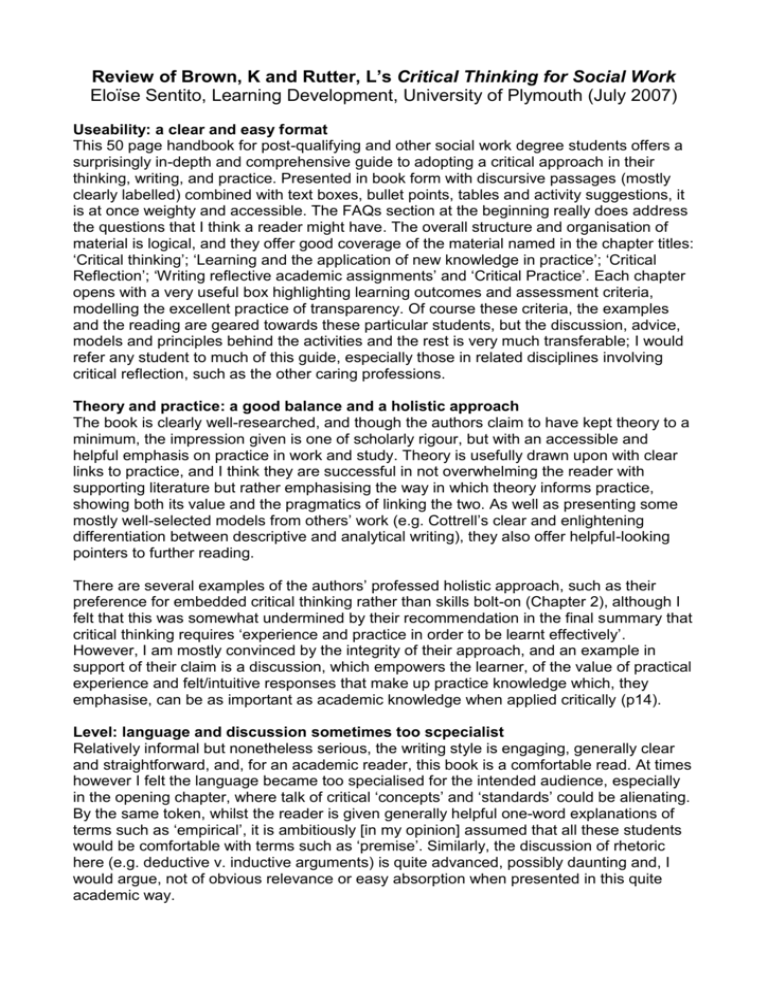
Review of Brown, K and Rutter, L’s Critical Thinking for Social Work Eloïse Sentito, Learning Development, University of Plymouth (July 2007) Useability: a clear and easy format This 50 page handbook for post-qualifying and other social work degree students offers a surprisingly in-depth and comprehensive guide to adopting a critical approach in their thinking, writing, and practice. Presented in book form with discursive passages (mostly clearly labelled) combined with text boxes, bullet points, tables and activity suggestions, it is at once weighty and accessible. The FAQs section at the beginning really does address the questions that I think a reader might have. The overall structure and organisation of material is logical, and they offer good coverage of the material named in the chapter titles: ‘Critical thinking’; ‘Learning and the application of new knowledge in practice’; ‘Critical Reflection’; ‘Writing reflective academic assignments’ and ‘Critical Practice’. Each chapter opens with a very useful box highlighting learning outcomes and assessment criteria, modelling the excellent practice of transparency. Of course these criteria, the examples and the reading are geared towards these particular students, but the discussion, advice, models and principles behind the activities and the rest is very much transferable; I would refer any student to much of this guide, especially those in related disciplines involving critical reflection, such as the other caring professions. Theory and practice: a good balance and a holistic approach The book is clearly well-researched, and though the authors claim to have kept theory to a minimum, the impression given is one of scholarly rigour, but with an accessible and helpful emphasis on practice in work and study. Theory is usefully drawn upon with clear links to practice, and I think they are successful in not overwhelming the reader with supporting literature but rather emphasising the way in which theory informs practice, showing both its value and the pragmatics of linking the two. As well as presenting some mostly well-selected models from others’ work (e.g. Cottrell’s clear and enlightening differentiation between descriptive and analytical writing), they also offer helpful-looking pointers to further reading. There are several examples of the authors’ professed holistic approach, such as their preference for embedded critical thinking rather than skills bolt-on (Chapter 2), although I felt that this was somewhat undermined by their recommendation in the final summary that critical thinking requires ‘experience and practice in order to be learnt effectively’. However, I am mostly convinced by the integrity of their approach, and an example in support of their claim is a discussion, which empowers the learner, of the value of practical experience and felt/intuitive responses that make up practice knowledge which, they emphasise, can be as important as academic knowledge when applied critically (p14). Level: language and discussion sometimes too scpecialist Relatively informal but nonetheless serious, the writing style is engaging, generally clear and straightforward, and, for an academic reader, this book is a comfortable read. At times however I felt the language became too specialised for the intended audience, especially in the opening chapter, where talk of critical ‘concepts’ and ‘standards’ could be alienating. By the same token, whilst the reader is given generally helpful one-word explanations of terms such as ‘empirical’, it is ambitiously [in my opinion] assumed that all these students would be comfortable with terms such as ‘premise’. Similarly, the discussion of rhetoric here (e.g. deductive v. inductive arguments) is quite advanced, possibly daunting and, I would argue, not of obvious relevance or easy absorption when presented in this quite academic way. In subsequent chapters there are examples of interesting (to me) but possibly off-puttingly abstract intellectual discussions that could at least benefit from simpler introductions, breakdowns, explanations and/or subheadings. Cust’s supposed definition of a critical practitioner (p37) is presented in an overly complex schema that is difficult to follow, after some discussion that doesn’t answer in a clear way the implicit (why not explicit?) question of ‘what is a critical practitioner?’ The crucial message (to do with assumptions and judgment) at the end of the first chapter could also usefully be more directly stated. In summary: mostly straightforward; sometimes demanding; always interesting However, not being patronising is a definite strength, and the topics as well as much of the discussion are interesting, important and relevant, and, especially where they are directly and simply described, the value of this book is clear. And the actual pragmatics usually are simple and direct, as for example in Chapter 4, where the tables are mostly really clear and helpful, and the advice on developing a point and structuring arguments and paragraphs is good penny-dropping stuff. So my main doubt is regarding level. Granted, a ‘Critical Thinking for Dummies' guide would probably be severely oxymoronic (and many worse things besides), but reading Critical Thinking for Social Work, I kept coming back to the thought that those students who would be interested and intellectually able enough to easily engage with this text are probably not the ones who need to read it. That said, despite requiring a bit of effort from the reader (and perhaps a bit of skimming and skipping), Brown and Rutter offer a mostly invaluable, much needed and stimulating demystification of lecturers’ expectations of student work. In conclusion: well worth the effort! Can they please offer a more generic one for all undergraduates too?!
